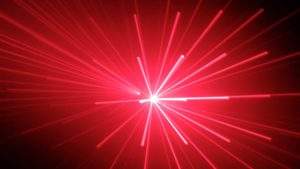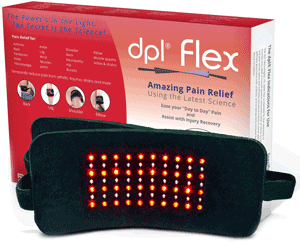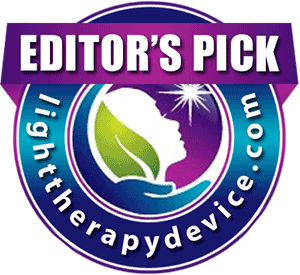 Acknowledged by science and hailed by practitioners of Ayurvedic medicine, low level laser (light) therapy, or LLLT, sits at the sweet spot of treatments for reversing thin hair and baldness – affordable, effective and convenient. And, what could be more natural than light? No wonder then that products of all shapes and sizes have literally exploded onto the marketplace. In this post, I explain low level laser (light) therapy as well as how it is proposed to work at the cellular level. Read on to discover how LLLT is quite literally the perfect complement to any hair loss reversal regimen.
Acknowledged by science and hailed by practitioners of Ayurvedic medicine, low level laser (light) therapy, or LLLT, sits at the sweet spot of treatments for reversing thin hair and baldness – affordable, effective and convenient. And, what could be more natural than light? No wonder then that products of all shapes and sizes have literally exploded onto the marketplace. In this post, I explain low level laser (light) therapy as well as how it is proposed to work at the cellular level. Read on to discover how LLLT is quite literally the perfect complement to any hair loss reversal regimen.
Table of Contents
What is Low Level Laser (Light) therapy?
Low level laser (light) therapy is an FDA approved treatment involving the application of low powered lasers or light-emitting diodes (LEDs) to the skin’s surface or body cavities. It is painless and safe, carrying no side effects or risks when used properly.
LLLT goes by a number of different names, including:
- Low-power laser therapy (LPLT)
- Soft laser therapy
- Low-intensity laser therapy
- Low-energy laser therapy
- Red light therapy
- Near infrared laser light
- Cold laser therapy
- Bio-stimulation laser therapy
- Photo-biotherapy
- Photobiostimulation
- Therapeutic laser
- Monochromatic infrared light energy (MIRE) therapy
- Laser photo therapy

Red light’s effect on mitochondrial respiration inside the cell. Source: Ying-Ying et al, 2009.
Biphasic Dosing, or Less Is More
Home and salon devices approved for low powered laser or LED treatment do not produce heat. They deliver a wavelength strength between approximately 600 nm to 1,000 nm. Additionally, the light treatment is needed only a few minutes at a time, usually at a frequency of every other day or less. These are intentionally low dosing parameters and represent the optical window for inducing tissue repair. This phenomenon is referred to as “biphasic dosing”. Put simply, low levels of light seem to elicit greater stimulation of tissue repair and growth than higher doses of light.
Ruby Red Does the Trick
Additionally, it appears that only red light confers the benefit. Red light’s effect may be akin to photosynthesis in plants, where exposure to light results in a chemical change at the cellular level. The diagram to the right and above depicts red light penetrating the human cell membrane, exciting parts of the cell called “photoacceptors”. Once excited by exposure to red light, these photoacceptors appear to trigger a complex cascade of chemical reactions that stimulate renewed tissue repair and growth.
The following video is an approximately 5 minute explanation by Professor Michael Hamblin, Wellman Centre for Photomedicine, Harvard Medical School. He explains low level laser (light) therapy and biphasic dosing. Source: International Dose Response Society
The Discovery of Low Level Light Therapy
Scientists and physicians know that low level laser (light) therapy is an effective tool for treating many medical conditions. Its discovery, however, originated with hair.
In 1965, a Hungarian physician by the name of Endre Mester conducted experiments to test if tumors would respond to treatments by a powerful red laser. He implanted tumor cells into mice through a surgical incision in the skin. Then he applied the red laser to the mice. To his surprise, the laser didn’t affect the tumors at all. Even more interestingly, he noticed that the incisions of the mice who received the red light treatment seemed to heal faster. The hair where he had shaved them also grew back faster. In turned out that the custom laser he designed was not as powerful as he had thought. Mester had inadvertently become the father of low powered photobiostimulation.
What Is Low Level Laser (Light) Therapy Used For?
Mester’s accidental discovery opened the door to low level light therapy’s wide application in medicine. For example, low level laser (light) therapy has long demonstrated great benefits to wound healing. Additionally, nerve regeneration, stroke recovery, joint pain relief, mucositis and all manner of skin conditions benefit from the application of LLLT, according to Avci et al in the journal Lasers in Surgery and Medicine (2014). Other literature points to applications in dental, oncology, ophthalmology, pain management and veterinary science. Across many tissue types, LLLT increases the rate of healing, increases the quality and strength of tissue healing and eliminates inflammation.
And of course, low level laser (light) therapy is also used in the treatment for pattern hair loss, otherwise known as androgenic or androgenetic pattern hair loss (male female pattern baldness). The FDA approved light therapy for this type of hair loss in 2007. Although studies suggest light therapy may help to reverse hair loss due to other causes (e.g. chemo-induced baldness), the FDA has not, to date, approved LLLT as a treatment for these.
How Does Low Level Laser (Light) Therapy Work?
Researchers don’t know exactly how or why LLLT promotes hair growth. Instead, they offer a number of theories and “proposed mechanisms”, like the one described earlier. Another frequently cited mechanism focuses on the the effect of light on the cell’s mitochondria. Mitochondria are the cells “power plants”. They convert food sources into a kind of energy called ATP through the process of oxidative phosphorylation. This process is the foundation of cellular respiration so it forms a logical starting point for describing the photochemical effects of light.
The Proposed Biochemistry of LLLT
Researchers cite evidence that LLLT causes nitric oxide (NO) to dissociate from cytochrome c oxidase. This results in increased ATP production. Dissociated NO also triggers reactive oxygen species and a host of downstream processes that cause an increase in growth factors and inflammatory intermediaries. The final result is increased tissue oxygenation and better tissue repair and growth. NO also acts as a vasodilator. This means that the NO molecule increases blood flow and delivery of nutrients to hair follicles. Lack of blood flow and nutrition is a significant contributing factor to the development of baldness, including pattern baldness.
The following is a summary of additional candidate mechanisms for how light may influence a photochemical effect at the cellular level:
- Alters expression of matrix metalloproteinase (MPP-2) which is closely associated with tissue formation and turnover, and is closely involved in hair genesis
- Modulates inflammatory processes. Too much inflammation contributes to hair loss.
- Modules immune system responses, closely related to inflammatory processes.
- May inhibit Prolactin, a hormone involved in hair growth and shedding, among many other things. Prolactin is sensitive to light exposure.
- Mimics subtherapeutic injury which may cause an influx of growth factors and other enzymes. These are involved in the formation of blood vessels and tissues which promote cell turnover in the scalp, and subsequently, hair renewal. In this way, red light therapy may share some similarities with Platelet Rich Therapy (PRP) treatments.
The Effect of Low Level Laser (Light) Therapy on the Hair Growth Cycle
Whatever mechanism or mechanisms are at work at the cellular level, countless experiments prove the favorable effects of low level laser (light) therapy for reversing hair loss. Researchers explain its effect across the three main phases of hair growth, as shown in the diagram below. First, during telogen (the resting phase), low level red light therapy may wake up hair follicles, hastening them to start their anagen (growth) phase. Second, red light therapy during telogen likely also increases the duration of the anagen phase. Third, greater duration of growth allow more hair to proliferate and populate the scalp at the same time, contributing to the appearance of greater volume and density. Finally, increased vitality of the hair during anagen may also prevent hair from prematurely entering the catagen phase. The catagen phase is the transitional phase toward telogen.

What Do You Think About LLLT?
What is your experience with low powered light therapy? Has it worked for you? Or, do you think it’s just a bunch of bunk? What kinds of questions do you have about low level laser (light) therapy or red light therapy? Please share your thoughts below in the comments. We’d really love to hear from you. And, if you’ve found this post helpful or interesting, please share it on Facebook and Twitter! 🙂
Sources
Gáspár, L. Professor Endre Mester, the father of photbiomodulation. J Laser Dent. 2009 17(3): 146-148.
Laser Therapy for Alopecia. Retrieved from https://www.altmd.com/Articles/Laser-Therapy-for-Alopecia
Low-Level Laser Therapy: Healing Benefits and Risks. Retrieved from https://www.chopra.com/articles/low-level-laser-therapy-healing-benefits-and-risks
Low level laser therapy. (2017, January 10). In Wikipedia, The Free Encyclopedia. Retrieved 18:00, February 5, 2017, from https://en.wikipedia.org/w/index.php?title=Low_level_laser_therapy&oldid=759371024
Roddy, Danny. Hair Like a Fox: A Bioenergetic View of Pattern Hair Loss. 2013.
Pinar, A. MD. Low-Level Laser (Light) Therapy (LLLT) for treatment of hair loss. Lasers Surg Med. 2014 Feb; 46(2): 144-151.
Sawhney, M.K., Hamblin, M.R. Low-level light therapy (LLLT) for cosmetics and dermatology. Proceedings of SPIE. 2014 Jan; 8932
What is LLLT? Retrieved from https://www.thorlaser.com/LLLT


